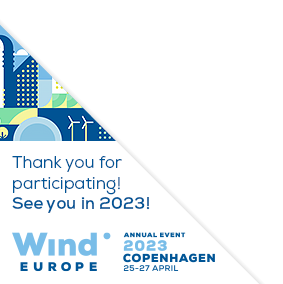Posters
Siblings:
ProceedingsProgrammeSpeakersPostersContent PartnersGlobal Markets TheatreWindTalks for InnovationProgramme Committee & Abstract ReviewersSpeaker's DashboardCome meet the poster presenters to ask them questions and discuss their work
Check the programme for our poster viewing moments. For more details on each poster, click on the poster titles to read the abstract. On Wednesday, 6 April at 15:30-16:15, join us on Level 3 of the Conference area for the Poster Awards!

PO255: Layout optimization of commercial onshore wind farms using six metaheuristic algorithms
Zia ul Rehman Tahir, Assistant Professor, University of Engineering and Technology Lahore
Abstract
Turbulence is created in downstream region when turbine blades extract energy from wind energy flowing across its blades. Performance of one turbine is compromised due to wake effects produced by neighboring turbine. Turbines are usually placed at larger distances to minimize wake effects as observed in operational wind farms. Suitable placement of turbines to generate maximum energy known as wind farm layout optimization (WFLO) is the solution for these issues. Comparative performance of six metaheuristic algorithms was performed for two currently operational onshore wind farms (FWEL-I and FWEL-II)in coastal area of Pakistan and based on performance best was selected.The commonly used Jensen’s wake decay model was utilized to evaluate wake of a turbine. The minimum distance of 3.5 D was kept between turbines in crosswind and downwind directions. Current layouts of two farms were compared with optimized layouts for maximum possible turbines based on best-selected algorithm. Maximum capacity factor and annual energy generation (AEG) were observed with Grasshopper Optimization Algorithm (GOA) and worst with Real-code Ant Colony Optimization (ACOR). The capacity factor decreases and AEG increases with the increase in the number of turbines for both wind farms. Maximum 30 and 37 turbines could have been placed compared to existing 20 turbines with the same area, providing an increment in AEG of 52.5 GWh and 97.3 GWh with less than 5% compromise in capacity factors for FWEL-I and FWEL-II respectively. The outcomes of this study will help policy-makers and researchers to study wake effects and optimize layouts with the best possible algorithm.










Follow the event on: